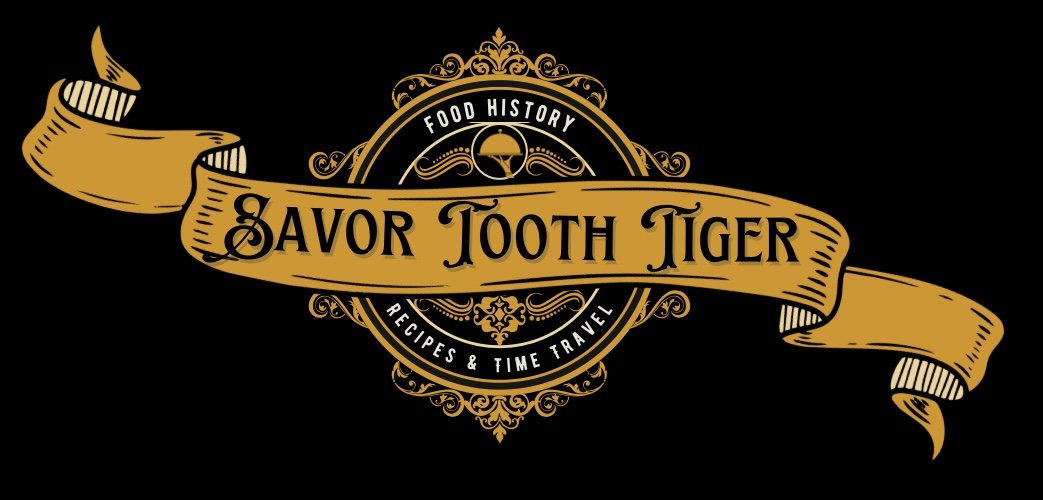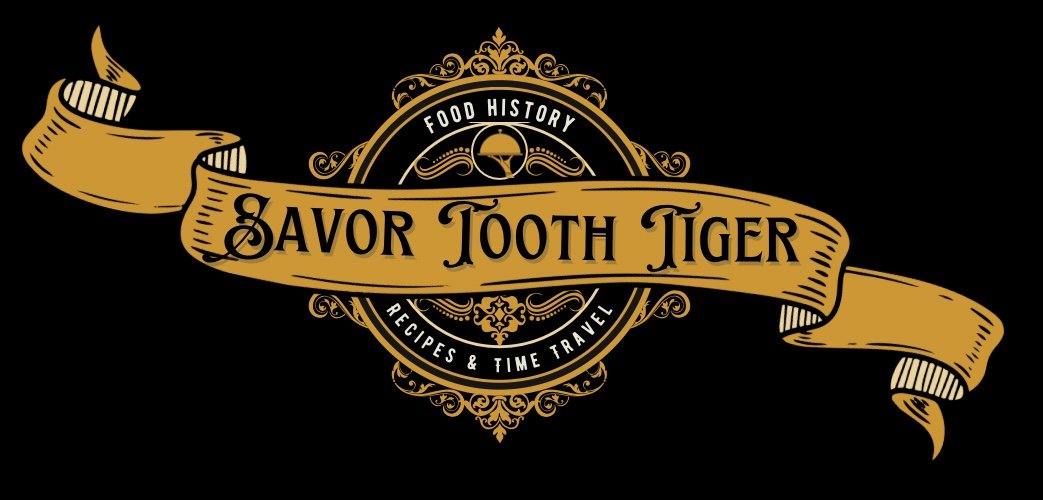Downton Abbey Food
We’re going back to Edwardian England to learn which foods were cooked and how they were served. We’ll take a look at Downton Abbey as a fictional example of what food was really like in an Edwardian manor, like Highclere Castle. Today I’m using authentic recipes for roast quail with cherry sauce and duchess potatoes from master chef Escoffier to exemplify the upstairs meals and I’ll make a delicious English classic from downstairs, seen in the Downton abbey series, treacle tart. What meals were served and what style of service was used in Edwardian England? How did they stagger meals so that the servants were fed between the upstairs meals? I’ll answer why married ladies of Downton were permitted the special privilege to have breakfast in bed. And l’ll walk you through the recipes for you to try at home. The Edwardian era in England was technically from 1901-1910 during the reign of King Edward VII, but some historians extend the era to the beginning of the First World War in 1914.
Let’s take a look at full a day of meals at Downton Abbey:
Both the Crawley family and the servants had 4 meals per day. Very early in the morning, the cook & kitchen maids would start the upstairs breakfast. Staff would grab a quick bite of toast and tea whenever they could. A full Breakfast was served at 9am, typically in a buffet for the family to serve themselves. On the sideboard, breakfast might include eggs, sausage, kedgerie, toast and jams, tea, coffee or cocoa. married ladies of Downton were permitted the special privilege of breakfast in bed. I‘ve read a few theories as to why only married women might take breakfast in bed. It’s possible that married ladies wouldn’t need to socialize with guests because they were already taken, or perhaps only married ladies had personal maids to arrange such a meal, or, my belief is that it has something to do with morning sickness and allowing the lady of the house a peaceful start to the day and protecting the heir, should she be with child.
Lunch or luncheon served midday was less formal than dinner, with lighter fare. Cold meats, salads, pies or perhaps a picnic or hunting lunch.
Servants usually had to wait for their main meal of the day around 2pm called dinner. In the servants hall, the staff would sit down together to share a hot meal like a roast or stew with a starch and a sweet like treacle tart. Staff drank tea or water but some houses allotted a few pints of beer each day.
Afternoon tea bridged the gap between luncheon and dinner, could range from an informal small gathering of sandwiches, sweets and tea to an all out garden party with champagne and ice cream.
Servants took a tea and snack break at 4pm, and given the amount of manual labor in these jobs, they really needed the extra calories to get through the long work day.
Dinner was the highlight of the day, served around 8pm. The Dowager Countess says nothing succeeds like excess and with 8 to 10 courses of the finest food and wine, there was plenty to sample.
Supper for the servants just before bed could include leftovers from the upstairs meal, but even within the servants there was a hierarchy with what foods were available to them and whether they even got to sit in the servants hall.
Let’s make our upstairs dinner: quail with cherry sauce and duchess potatoes from chef Escoffier’s 1903 cookbook Le Guide Culinaire. A typical Edwardian dinner was 8 courses, and up to 12 for very formal occasions. Quail were very popular among the Edwardian aristocracy, Escoffier had several recipes in his cook book. I don’t even think we made quail in culinary school so I really wanted to give it a go. To prepare them for roasting, I’ll simply coat with butter, salt and pepper. These will roast in a very hot oven for about 10-15 minutes. For escoffier’s cherry sauce, I’ll reduce some port wine with orange zest and mixed spice (which can be a mixture of cinnamon, allspice, nutmeg, cloves, and ginger). After reducing, red currant jam is added along with orange juice and morello cherries with the pits removed.
Duchess potatoes are a really impressive but simple side dish. Potatoes get boiled in water and passed through a food mill or sieve. The potatoes get seasoned with salt, pepper, nutmeg and butter, then enriched with egg yolks and a whole egg. Using a piping bag with a large star tip, the potatoes get piped onto a baking sheet and brushed with egg wash. These brown in the oven for 7-8 minutes.
Today for my downstairs recipe, I’m going to make an old English classic, treacle tart, using lyle’s golden syrup. Harry Potter fans may recognize this dessert as Harry’s favorite. I adapted this recipe from the Downton Abbey cookbook and it’s surprisingly simple. It could definitely have been a downstairs treat, simple enough for Mrs. Patmore to make in between the upstairs meals. In season 3, episode 1…Mr. Carson enjoys a slice of this tart. It’s a very simple tart base of butter, flour and ice water. The filling is simply golden syrup, breadcrumbs and lemon juice and zest. It’s a very economical dish so it would be well known in working class Edwardian Britain. This recipe is not overly sweet so I like to finish it with a little vanilla ice cream and one last drizzle of golden syrup.
*Note: The tart really loses it’s magic if the filling gets over baked. It needs the blind baking to create a crispy crust and a light soft filling. Also, the breadcrumbs really matter. Store bought breadcrumbs often have fillers with oils and additional flavors that mess with the texture. Go for homemade breadcrumbs from stale white bread. Makes a world of difference!
Escoffier’s Duchess Potatoes:
Follow the directions for 4182 (Croquettes de Pommes De terre) Except for the last paragraph. Instead of dividing the mixture, add to a piping bag and continue the directions for 4185 (Pommes De Terre Duchese)

Roast Quail with Cherry Sauce
Ingredients
- 4 quail
- 2 tablespoons melted butter, salt and pepper
- 1 cup port wine (ruby)
- 1 pinch mixed spice (which can be a mixture of cinnamon, allspice, nutmeg, cloves, and ginger)
- zest of 1 orange and juice of 1 orange
- 7 ounces pitted cherries
- 1 cup cherry or red currant jam
Instructions
- Preheat oven to 500 degrees Fahrenheit. Brush quail with melted butter and salt and pepper. Roast on a tray for 10-15 minutes.
- To make the sauce, reduce the port wine by 1/3 over medium high heat in a sauce pan with the orange zest and mixed spice.
- Add the orange juice, jam and cherries. Reduce for another 5 minutes until thick and syrupy.
- Serve over the quail or on the side.

Treacle Tart
Ingredients
- 1 1/3 cup all purpose flour
- 6 tablespoons cold butter (cubed)
- 3-5 tablespoons ice water
- 1 1/4 cup Lyle’s Golden syrup
- 1 1/4 cup plain breadcrumbs (not seasoned) (I like homemade breadcrumbs with stale white bread)
- zest and juice of 1 lemon
Instructions
- To make the pastry, break the butter up in a bowl with the flour with your hands (or with a food processor) until the butter is very finely broken up like sand.
- Add in enough cold water to form a ball of dough. Knead just a few times to come together. Chill the dough covered in fridge for 10 minutes.
- Roll out the pastry with a rolling pin to just a few inches larger than a 9 inch tart tin. Fill the tart tin with the dough, lightly pressing it into the tin. Using a rolling pin, trim the edges all the way around.
- Blind bake the tart shell by covering the dough with aluminum foil, add in pie weights or dried beans for 17 minutes at 400 degrees Fahrenheit.
- Mix the tart filling. Remove the foil and the weights. Fill the tart with the treacle filling. Bake for an additional 15 minutes until the filling has set and the shell is lightly golden. The top should feel slightly sticky. It will firm up as it cools. If you over bake the tart, the filling can get tough and hard to cut through. The tart in the video is actually a bit over baked. The filling should be soft but hold it’s shape and the shell should be light golden.
- Allow to cool. Serve with vanilla ice cream and another drizzle of golden syrup.





